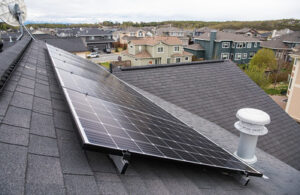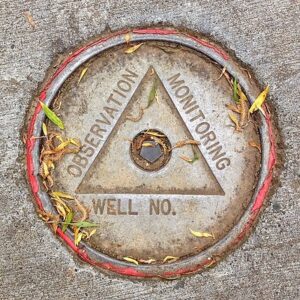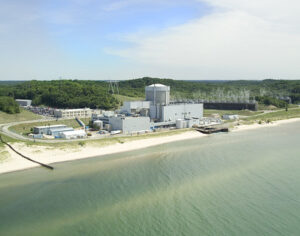Population growth with a greenbelt is often seen but isn’t guaranteed. In 2023, the Census Bureau estimated the Washtenaw County population at 365,536, which is a 1.9% decline from its peak of 372,540 in the 2020 Census. The county’s population is still 10% higher today than it was in the 2000 Census, prior to the adoption of the greenbelt strategy.
Losing population isn’t necessarily bad; it depends upon the relative economic wealth of the declining population. Ann Arbor’s population peaked in 2020 at 123,500 people and has declined in each successive year. Currently, about 116,500 people live inside the city limits. Census Bureau estimates indicate that virtually all of Washtenaw County’s population loss occurred in the City of Ann Arbor.
One telling characteristic is the household income profile of the residents of the City of Ann Arbor, and how that has changed since 2000. In 2000, the most commonly reported household income bracket in the City of Ann Arbor was $50,000-$74,999. In the 2022 American Community Survey, the most frequently reported household income bracket in the City of Ann Arbor was $200,000+.
Even when you adjust the household income data for inflation, the shift of Ann Arbor’s population to higher income brackets is significant. Fewer households report being in lower (inflation-adjusted) income brackets today than in 2000. So, while Ann Arbor’s population declined, its average household income rose. This points to the possibility that high-income households are systematically replacing Ann Arbor’s lower-earning ones.
It also suggests that in an area where the household income profile has shifted significantly in the space of two decades, a community college that generates graduates whose earning potential is sub-$40K is likely just generating more low-income households. These low-income households aren’t being established in the City of Ann Arbor, but where are they?
Affordable communities in Washtenaw County
There are some cities and townships where the median household income (MHI) is below the Washtenaw County MHI of $84,245. The City of Ypsilanti has a MHI of about $42,000. Ypsilanti Township’s MHI is about $64,000. Chelsea checks in with a MHI of $71, 400. The City of Ann Arbor’s MHI is $78,500, and Superior Township has a MHI of $84,100.
What does the population growth look like in the areas of the county with below-average MHIs? Superior Township (38.1%) and Chelsea (23.9%) experienced high population growth following the inception of the greenbelt. Ypsilanti Township grew by 13%, and Ann Arbor grew by 8.6%. The City of Ypsilanti was the only area with a lower-than -average median household income with a negative population growth.
Regardless of a community’s median household income, Washtenaw County cities and townships may be experiencing growth they didn’t plan on, don’t have the infrastructure to support, and can’t afford. The major source of income for these communities is property tax. Owner-occupied homes comprise the largest percentage of households in these places, but property taxes for these parcels are capped at the lower of the rate of inflation or 5%. Tax revenues in these places may not rise fast enough to meet the demands of rapid population growth.
Ann Arbor’s decision to slow its population growth in order to push its housing values (and property tax revenues) higher is putting significant pressure on other Washtenaw County communities and will continue to do so as time goes on. These communities are less able to produce the expensive infrastructure and deliver the services required to support rising populations there.
The Greenbelt might just be displacing sprawl
For example, Scio Township – a Greenbelt community whose population increased by 12% between 2000 and 2020 – announced that it would raise municipal water costs by nearly 23% in 2024, leading to an average household increase of nearly $1,700. In 2025, township officials predicted that water rates would rise again by an average of $315 per household. The total anticipated increase through 2029 is 44%. Scio Township’s past practice of not passing on water and sewer rate increases (from the City of Ann Arbor) regularly necessitated the massive one-time increase, referred to as the “Rip the Band-Aid Off Plan.”
2020 Census Bureau data indicate that Scio Township has a relatively low number of residents who have trouble affording their property taxes. At the same time, the City of Ann Arbor has purchased the development rights to a significant number of parcels there, which will limit new housing developments. The average sale price of a house in Scio Township in August 2024 was about $530,000.
Scio Township’s water problem arose from a conscious decision by township officials to delay raising water rates, but even good planning doesn’t always accommodate rapid growth in small cities and townships. Roads, bridges, water infrastructure, traffic management, telecommunications and power infrastructure, and services like trash hauling, policing, fire protection, and K-12 schooling may not adequately serve a growing population.
Ann Arbor may be limiting development inside the city limits and inside adjacent Greenbelt townships, but that could simply push substantial development to less populated, less developed areas that are also less equipped to accommodate growth and didn’t agree to this plan.
Tomorrow, I will look at the value of residential real estate inside and outside the Ann Arbor Greenbelt.
Photo Credit: Open Grid Scheduler/Grid Engine , via Flickr









